Gadaa is a broad concept, a system that consists a number of institutions, concepts, values and knowledge in it.
By Gemechu Kedir
Oromo elites, Abba Gadaa (father of Gadaa), historians most often say that it is impossible to know about Oromo’s background without understanding the ruling scheme of the Gadaa System. They also say investigating Oromo society without considering the Gadaa System is merely like a man walking without a skeleton. In fact, many scholars have given various explanations of Gadaa System.
Generally speaking, Gadaa is a broad concept, and it is a system that consists a number of institutions, concepts, values and knowledge in it. It refers to temporal and religious institution in the Oromo society. It would be very difficult to define and easily know the meaning of Gadaa unless we split it into the religious, political, and cultural institutions. According to the meaning given by scholars, the Gada System was associated with the development of religious and political culture of the Oromo. It appears in five names of Gadaa parties that were named by relating to the religious, political and economic life of the society. Namely, Gadaa of peace, Gadaa of prosperity, Gadaa of conflict (war) and Gadaa of Melba. The names reflect the especial events that took place in the specified period of eight years. Each Gadaa has eight years.
According to Prof. Asmerom Legesse’s explanation, Gadaa is a system of generation classes that succeed each other every eight years in assuming political, military, judicial, legislative and ritual responsibilities. Each one of the ten active generation classes beyond the three grades has its own internal leadership and its own assembly (ya’a ). But the leaders of the class become the leader of the nation
as a whole when their class comes to power in the middle of the life course, a stage life called “Gadaa” among the Borana and “Luba” among the central Oromo. Prof. Asmerom further stated that Gadaa does not only refers to ‘Buttaa’ ceremony that takes place in changes of grade every eight years. All political, social and economic affairs of Oromo and institutions like adoption (‘Moggaasaa’), conflict resolution (‘Araara’), compensation (‘Gumaa’), marriage law (‘Rakoo’), Oromo religion (‘Waaqeffannaa’), ‘Irreeaaaa’, Siinqee and
Marabbaa were make up of Gada system.
ARTICLE CONTINUES AFTER ADVERTISEMENT
The historical and anthropological studies on Gadaa mostly deal with the political and social nature than the essences, origin and development of the system. But, they have given information on their reference to African societies that used to live along the Nile Valley and around East African peoples. Gadaa regarded as one of the ancient type of social organization by relating it to culture of other Cushitic people. As to Tsegaye Gebre-Medhin description, Gadaa laws are originally derived from Waaqa (God). To spell, the single unit ‘Ga‘ represents law and ‘Da‘ represents ‘Waaqa’ (God). In general the word Gada means ‘Seera waaqaa’ (law of God) of
the ancient Cushitics known as Osiris. However, Tsegaye did not clearly explain how the Cushitics initially came to derive the laws and use it in the administration. Proto-cushitic peoples used to believe in a single God, and some times Osirs and Monotheism was a common religion of the same peoples of the Nile Valley. On the other hand, the fact that many Cushitic peoples and other East African peoples practice age-set type of organization in their culture in the long time presence in East Africa symbolized that Gadaa was an ancient institution and might have began before the dispersion of the proto-cushitics into different nation.
MORE ON THIS
Unesco Highlights Ethiopia’s Intangible Gada Heritage Preserving Heritages Is Preserving Identity Benefits of Gada’s Inscription in UNESCO Oromo oral traditional also supports the above view. As to elders in the earlier days, Gadaa was purely a religious institution that helped the society as a constitution. Later it came to bind the socio-economic, political and religious life of the innocent man living by raising cattle around Walaabuu. The innocent person is called ‘Garraamitichaa’ which literary means an old innocent man of Walabuu. Fortunately, while he was looking after his herds Waaqa (God) spoke to him under Odaa tree (sycamore tree) that he had to preform what Waaqaa (God) order him. While he was taking rest under the shade of Odaa (sycamore tree) instantly covered by cloud and mist Waaqaa (God) told him all laws and moral values to the innocent man of Walaabuu. And ordered the man to teach peoples of Walaabuu.Then on, peoples of Walaabuu obeyed the laws and the man became messenger of Waaqaa (God).
As to other scholars, the term Gadaa is very difficult to define precisely. It is a term loosely used for so many varied concepts that it has not any single meaning. The dividing line between the various definitions is shrouded in mystery and indistinct unless contexts or terms are understood. This is because the interpretation of Oromo terms, idiomatic expressions and proverbs related to the Gadaa have extra meaning other than their surface meanings. Based upon this diction, it impossible to give precise meaning and definition of
Gadaa. Its meaning varies from time to time. Some call it a calendar, others referred it as titles given to the men who have reached six stages which means (8X 6=48) years.
ARTICLE CONTINUES AFTER ADVERTISEMENT
Hence, Gadaa is instrumental in examining and understanding the cultural and historical experience of the Oromo people. Concerning its genesis,German scholar E. Habeland also argued that Oromo’s culture is archaic and extremely simple. He as well suggested that the complicated nature of the Gadaa System of the Oromo has made the system to appear
as a foreign element. Similarly, studies conducted on African civilization also gives some details on the evolution and development of Gadaa System. As to the study, age-set type of organizations might have begun when the society needed to sustain social order among themselves and to repel their rivals that were competing with them for land, water and power. Members of each group have the right to participate and preform obligation.
Every members of age-set is expected to be trained, to share experience and to play significant role turn by turn. Age-set (Gadaa’s grade) with their right and obligation
- Gaammee (0-8) playing (singing) training for fight,
- Dabballee (8-16) dancing (singing cultural songs),
- Kuusaa (16-24) training and fighting,
- Raabaa (25-32), Doorii (33-40),
- Luba (Gadaa) 41-48.
In general(0-40)were called as active members and 41-88 were passive according to ‘seera caffee’ (council laws) presentation. Every
individual through age-set enjoys various right and takes obligation in the life of the society in his life time. Active members implement all laws set by the passive members. This might be related to the ancient division of labour. Some scholars argue that the social organization of Gadaa System has something to do with the core democratic principles and gives big lesson to the world in various field of study.
For instance Prof. Asmarom on his part stated that Gadaa is significant for scholars of anthropology, sociology, psychology, history, culture, linguistics and others. Also Dr. Gemechu Megersa who deeply knows the culture of the Oromo society and conducted research for a long time supports the above views. Some constituents of the Gadaa System ‘Qaalluu’ (religious institution): In most literature, the Qaaalluu institution was referred to as Abbaa Muuda which is derived from ritual muudaa of principal figure. Literary Abbaa Muudaa
means father or owner of muudaa ceremony. So, both bear the same type of ritual leaders of Gadaa institution. Abbaa muudaa deals with the Gadaa System and offices are hereditary. Oditu, Karrayu, Qaalluu of Borena clan as well as
great Qaalluu of Gujii clan were said to be originally descendants from heaven.
In Oromo religion (Waaqeffannaa) the first Qaalluu (spiral) said to have been born exactly when Waaqaa (God) created ‘Horoo‘ who mean the first person out of Walaabuu. Still among various Oromo groups Qaalluu is believed to be the eldest son of Oromo and therefore given the title of father. Every eight years power is transferred from one Gadaa class to other without violence or conflicts due to the presences of Qaaluu. Rule of laws in Gadaa System governance in such a way that every individual must obey ‘Safuu’ (moral values) and ‘Seeraa’ (law) monitored by Qaalluu. Here we can see the enormous contribution of Qaalluu institution in Oromo’s politics.
ARTICLE CONTINUES AFTER ADVERTISEMENT
In the process of Gadaa governance Qaalluu is regarded as a representative of God, who is responsible to keep peace and order in the society. In general, according to Oromo’s societal perspective, Qaalluu institution act as a mediator between
Waaqaa (God) and the Oromo society. Kallachaa and Caaccuu: In the Gadaa System both Kallachaa and Caaccuu are the ritual materials used for demonstration of the Oromo society at large. They have their own time, place and events to do so. Kallachaa is a highly respected material and considered as cursing object possessed by the first born among the clans. Most of the time possessor of ‘Kallachaa’ can possess Bokkuu the sign of political power. Belongs to Oromo’s society Kallacahaa is believed to have come from Waaqaa (God) through lightening and Waaqaa. It is offered for human beings to maintain peace. It is not openly possessed and publicized to see and significant to ensure peace in resolution process. In genera Kallachaa is a symbol of peace and reconciliation. It is the most respected of all ritual objects which consists of a phallic ornament worn on the forehead by the ritual experts. Similarly, Caaccuu is symbol of fertility. Therefore it is used in rain making ceremony, in prayers to get children etc. Hadha Caaccuu (mother of Chaachuu) is the leader of Caaccuu. As Kallachaa represents Waaqaa (God) Caaccuu represents earth. Males are essential for the fertility of female: the same implication Waaqaa (God) drop rain (water) which is crucial for the fertility of the earth. There in lies why females and earth are considered as fertile.
To sum up ‘Caacuu‘ is a symbol of fertility and prosperity and also female ritual symbol according to Diinsa’s description. Abbaa Kallachaa and Haadha Caaccuu were identified from other member of the society by possessing the ritual objects of Kallachaa and Caaccuu to play pivotal role in socio-political and religious life of the Oromo society.



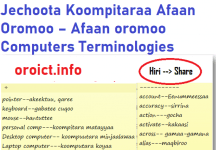



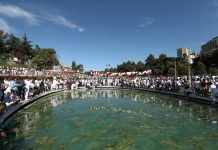
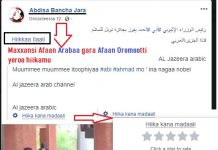
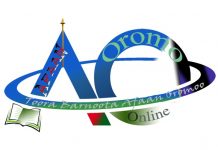

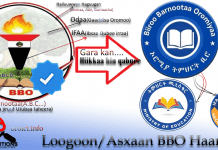
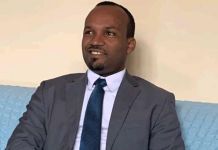
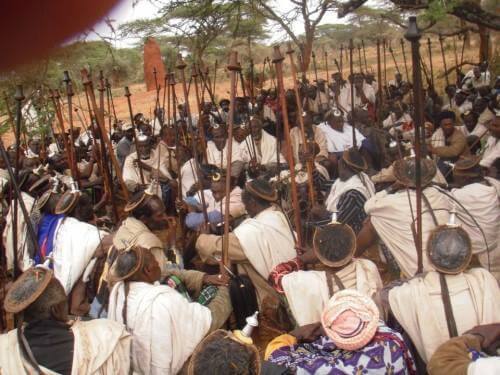
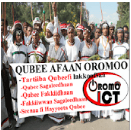



Very good post. I’m facing some of these issues as well.. https://Zeleniymis.com.ua/
Keep onn writing, great job! https://Www.Waste-Ndc.pro/community/profile/tressa79906983/